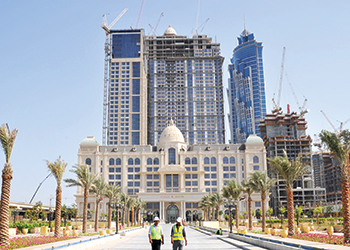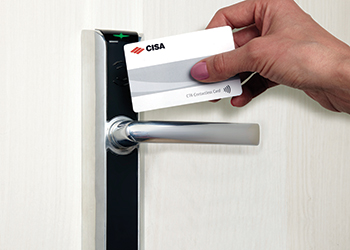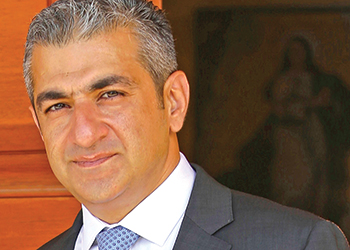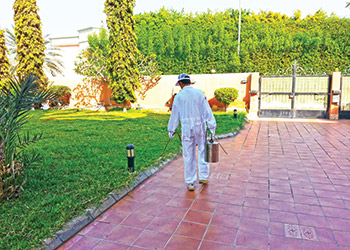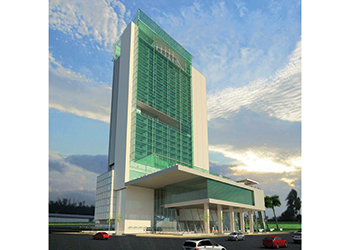
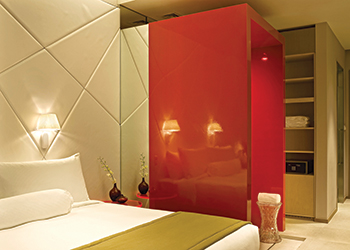 In the Middle East, lighting accounts for some 30 per cent of energy consumption in hotels.
In the Middle East, lighting accounts for some 30 per cent of energy consumption in hotels.
Energy conservation in hotels and offices starts with light control, says SHADI KHAROUF, Middle East sales director for Lutron Electronics.
The Middle East is increasingly searching for smart solutions for the cost-effective control and facility management of commercial environments such as corporate buildings, hotels and offices, which can lead to significant cost savings for new developments as well as renovation projects.
With the regional focus on developing smart and sustainable knowledge economies, energy management and cost savings are quickly rising to the top of the corporate agenda in the Middle East. Solutions for lighting, shade and temperature control, help optimise the corporate environment, and create efficient – and energy-efficient –workplaces whilst reducing costs.
In most office buildings, lighting accounts for around 39 per cent of annual electricity use. The figures climb higher in specialised settings such as healthcare facilities (43 per cent) and hotels (55 per cent). As energy costs rise, creating an energy-efficient workplace becomes an increasing priority for business.
With hundreds of new hotels and thousands of rooms under construction in the Middle East, this means that energy consumption is rising within the rapidly expanding hospitality sector in the GCC. Room management systems linked to guestroom solutions can help hotels in the Middle East significantly reduce their energy consumption and cost, where lighting accounts for 30 per cent and air-conditioning 40 per cent of the energy consumption.
In addition, guest presence detection can save energy by turning lights off when a room is unoccupied or initiating HVAC (heating, ventilation, air-conditioning) setbacks when a room is unsold. This ‘occupancy-based temperature setback’ can save 10 to 30 per cent of HVAC energy in hotel guest rooms and so make a significant contribution to sustainable hospitality.
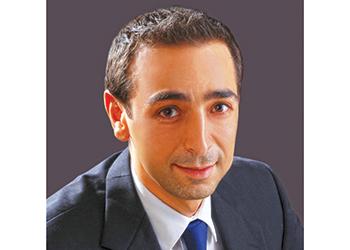 |
Kharouf ... smart solutions. |
A whole building solution helps companies reach full energy efficiency. The New York Times cut $600,000 from its annual lighting costs after installing a management system. A Houston (US) building saved $50,000 on its electric lighting bill, and saw a $16,000 reduction in air-conditioning expenses. Reducing uncomfortable hotspots and glare also improves the productivity of personnel.
Light control also decreases HVAC energy costs. Shading systems reduce the amount of solar heat gain that enters a space while reducing glare. Shades can also be adjusted automatically based on the sun’s position throughout the day, taking into account the season, building location and façade.
Dimming lights is the perfect start to saving energy. A single dimmer can save a business more than $85* annually, which can quickly represent several thousand dollars of savings in large-size commercial developments. Upgrading to dimmers not only improves the comfort of work space, it improves the return on investment as well.
More holistically, there is now powerful software available that allows facility managers to manage their electric light and daylight for maximum energy-efficiency, comfort, and productivity. Facility management tools can enable companies to manage their buildings from anywhere, easily monitoring, controlling and optimising a control system from any tablet, PC or smartphone. From any central location, a facility manager can control electric lights and blinds, as well as configure, monitor, analyse, and report on the light system in the building.
For example, lights can automatically be set to a preset level or to turn on or off in certain spaces based on the time of day. Blinds can automatically be raised or lowered in certain spaces at specific times. Conditional programming can also allow controls to operate differently based on the time of the day. For example, occupancy sensors can be disabled during working hours, but re-enabled in non-working hours.
Software provides reports and diagnostics that allow facility managers to improve maintenance and operations, identify issues before they become problems, and monitor lighting energy consumption in the whole building or any part of the building.
*Actual savings may vary depending on use and application. Stated savings are based on dimming four 75 W incandescent reflector lamps (rated at 1,500 hours each, costing $1.75 per lamp or 3,000-hour halogen bulbs costing $3.35 per lamp) by 50 per cent (perceived light level corresponding to 40 per cent reduction in power level) for five hours per day with electricity cost of $0.104 per kWh.





















_0001.jpg)


.jpg)
















.jpg)








.jpg)



